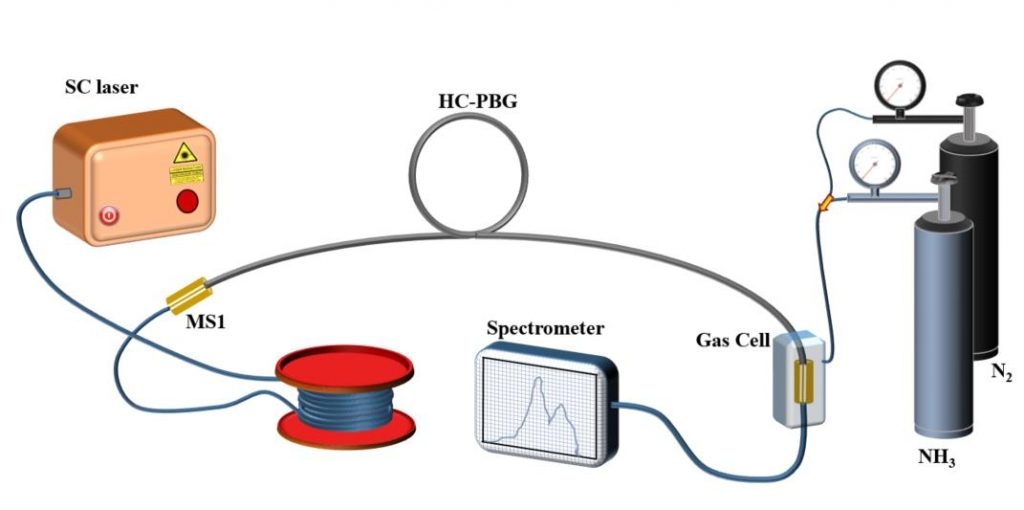A paper “Towards an all-fiber system for detection and monitoring of ammonia” by Professor Rodrigo Amezcua-Correa and Md. Selim Habib et al was selected for the outstanding paper award at SPIE Photonics West 2019.
Detection of ammonia based on an all-fiber configuration is reported. The system consists of a hollowcore photonic-bandgap (HC-PBG) fiber with 20μm core diameter and transmission window from 1490 to 1680nm. Absorption bands of ammonia at ~1538nm are targeted using a supercontinuum source with central wavelength at 1550 nm. We present the method of achieving a complete fiber system while addressing the gas entry/exit path through the HC-PBG. Analysis of the ammonia absorbance in the fiber with respect to fiber length and response time is investigated. By operating in the near infrared, we demonstrate how the proposed system addresses several challenges associated with fiberbased gas-sensing, using readily available commercial components.
